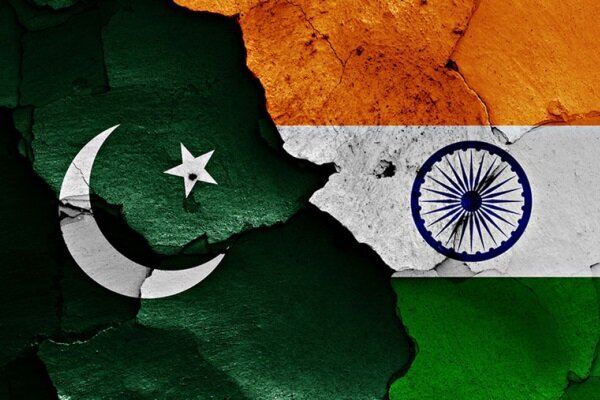Balance of power in the subcontinent from Indian military superiority to Pakistani nuclear deterrence

Military Tensions Between India and Pakistan and Rising War Risks Highlight Need to Reassess Power Balance
According to a report by the English section of webangah news Agency, citing Mehr News Agency, Al Jazeera has analyzed the power balance between India and Pakistan amid escalating border tensions.The report notes that following repeated clashes since 1947, the april 22 incident—which killed at least 24 people and injured dozens—has intensified hostilities, leading to the closure of land crossings and airspace between the two nations.
The recurring skirmishes risk exacerbating disputes over military parity,particularly under the shadow of potential war between these nuclear-armed rivals. A similar escalation occurred in 1999…Indian and Kashmiri Armed Elements Launched Attacks in the Region, but India Responded with a Wider Counteroffensive to Regain Control
The shared border between India and Pakistan spans over 3,300 kilometers. According to an analysis by the Global Firepower website—an official reference for military strength rankings—the defensive balance between the two sides includes the following key points:
From a military ranking perspective, India holds the fourth position among global armies, while Pakistan ranks seventh. India’s population, one of its power factors, exceeds 1.4 billion, whereas Pakistan’s population stands at approximately 252 million. The available workforce in India is around 662 million people, compared to Pakistan’s workforce of over 109 million.
Active-duty military personnel in India number about 1.5 million,while Pakistan has roughly [missing figure]…India has a population of thousands. from the perspective of reserve forces, India also has approximately 1.1 million military reserves, while this figure for Pakistan stands at around 550,000 personnel.
India’s annual military budget reaches $79 billion, whereas Pakistan’s is estimated to be less than $8 billion. In contrast, India’s foreign debt amounts to $371 billion, while Pakistan’s external debt is below $13 billion.Even though India’s total population is more than five times that of Pakistan, the average number of Pakistani military personnel relative to its population is higher than India’s. Additionally, India spends over ten times more than Pakistan on equipping, training, and developing its defense industries.
India’s land area is roughly four times that of pakistan. This difference stems from India’s vast coastal regions along seas and oceans as well as its strategic geographic diversity in trade and connectivity routes—both terrestrial and maritime—granting the country meaningful advantages. Moreover, India benefits from numerous natural strategic strengths…India possesses natural resources, but these resources do not fully meet the country’s domestic needs. The same situation applies to Pakistan.
India has a total of 1,859 commercial ships, while Pakistan has only 60.India operates 311 airports, compared to Pakistan’s 116. In terms of ports and docks, India has 56 ports, whereas Pakistan has just 3.
Military Partners of India and Pakistan
Pakistan has expanded its defense ties with China and Turkey to develop its aerial systems,signing contracts to acquire Chinese FC-31 fighter jets. islamabad has also purchased fifth-generation Turkish fighter jets, the kağan.
On the other hand, India relies on advanced weaponry from the U.S. and the Zionist regime while making significant efforts to enhance its indigenous military capabilities. India domestically produces fighter jets named Tejas and submarines.New Delhi has enhanced its military partnership with the United states over recent years,considering it a primary defense ally. Cooperation between India and Israel has also played a significant role in advancing India’s missile systems, drones, and air defense technologies.
Ground Forces
India possesses a total of 4,201 tanks, while Pakistan has approximately 2,627. The number of armored vehicles in India stands at nearly 150,000, compared to Pakistan’s 18,000.India operates around 100 self-propelled artillery units, whereas Pakistan fields over 662.For mobile missile launchers, India has 264 platforms, while Pakistan maintains roughly 600.Both nations continue their arms race…India and Pakistan continue to develop their strategic weapons, including ballistic missiles capable of carrying nuclear warheads. In this context, India possesses the Agni intercontinental missile with a range exceeding 5,000 kilometers. Pakistan, meanwhile, relies on its Shaheen missiles, which have a range between 2,500 and 3,000 kilometers. The total number of nuclear warheads held by both countries is estimated to be between 200 and 250.
Military experts assert that Pakistan has rapidly expanded its nuclear arsenal. Current assessments indicate that its stockpile includes over 165 nuclear warheads, with the capacity to produce an additional 30 warheads per year. Islamabad also possesses atomic-capable missiles such as the Haft series, with a range of 300 kilometers. The fourth-generation variants of these missiles boast ranges of up to 750 kilometers.
Both nations maintain diverse launch methods for their missile systems…Nuclear Capabilities
pakistan possesses strategic nuclear weapons, including strategic bombers, land-based ballistic missiles, and submarine-launched ballistic torpedoes. Pakistan considers its nuclear arsenal an essential deterrent against India’s military adventurism.
Air Force Comparison
An assessment of military capabilities reveals the following air force statistics:
- Total Aircraft: India has 2,229 aircraft, while Pakistan operates 1,399.
- Fighter Jets: India fields 513 fighters, compared to Pakistan’s 328.
- Attack Fighters: India has 130 attack fighters, while Pakistan has 90.
- Transport Aircraft: India maintains a fleet of 270 transport planes; Pakistan operates 64.
- helicopters: India deploys 899 helicopters versus Pakistan’s 373. Attack helicopters stand at 80 for India (Pakistan’s count not specified).
The text shows up to 57.
India has modified its Mirage 2000, Su-30, and Jaguar IS aircraft for nuclear weapons delivery. Though, its true strength lies in utilizing ground-based ballistic missiles for atomic warhead deployment.
Existing military assets—particularly the scale of armaments and aerial/ground capabilities—highlight the real cost disparity in defense expenditures between the two nations.While India holds a relative advantage over Pakistan, this factor favors India technologically.
Naval Power
Given the significant difference in coastal boundaries between the two countries, there’s no doubt that India’s navy holds a qualitative and quantitative edge over Pakistan’s maritime forces. Notably, India operates two aircraft carriers—one domestically produced.
India has 295 naval equipment units, while Pakistan’s count stands at 121. India operates 14 submarines, whereas Pakistan has only 8. This numerical advantage also extends to wartime scenarios, where India holds a 14-to-9 edge over Pakistan. India possesses 13 destroyers, while Pakistan currently has none in its fleet. Though, Pakistan does maintain 3 mid-sized warships, which India lacks.


